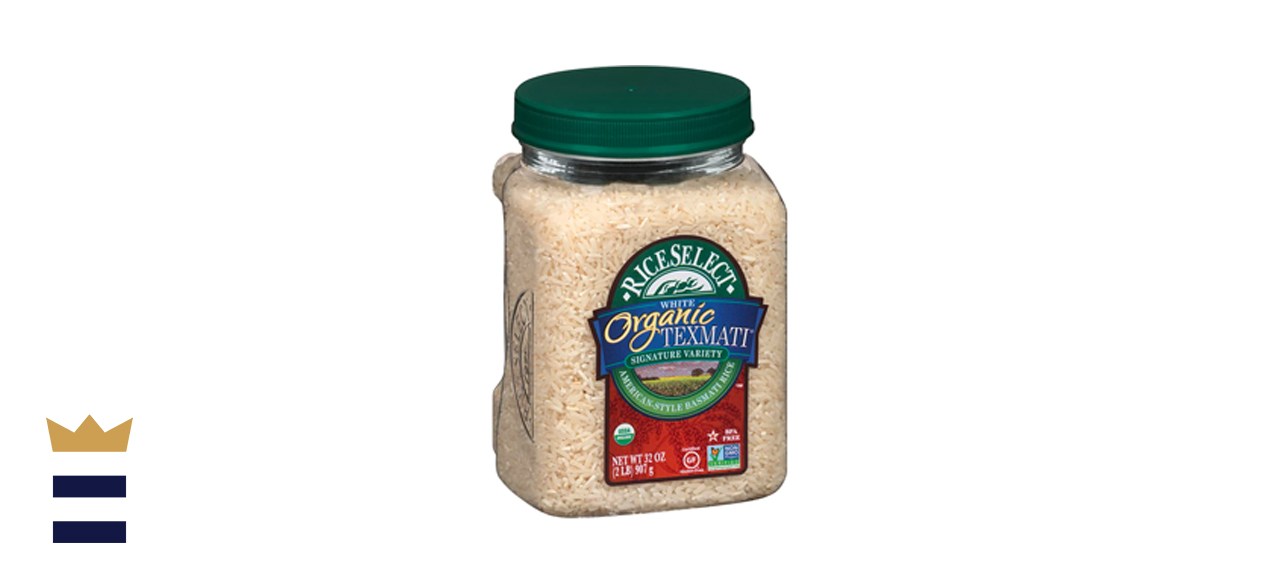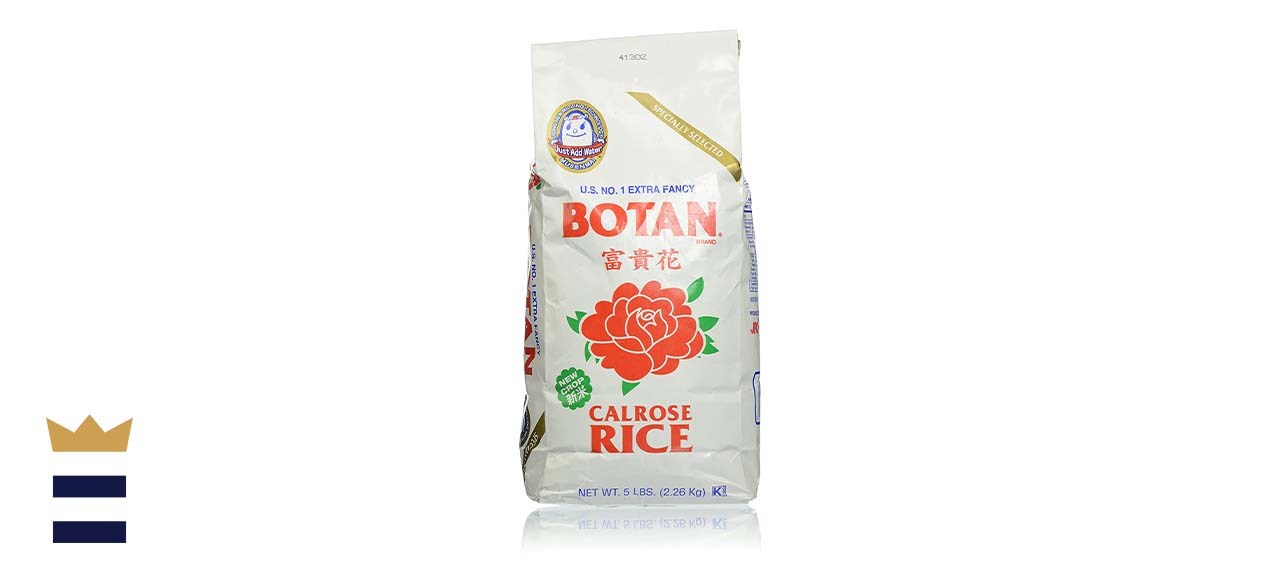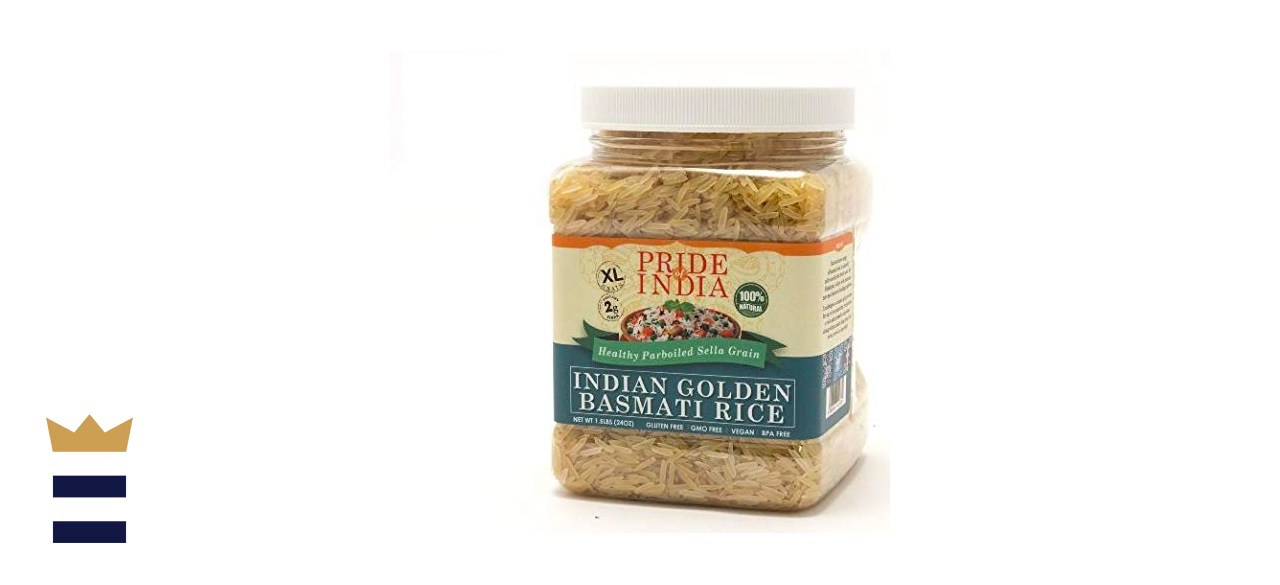Which rice is best?
Since its discovery in China over 10,000 years ago, rice has become a dietary staple found in millions of homes worldwide. This tiny grain serves as a crucial source of fiber and carbohydrates and is the foundation of thousands of delicious recipes.
No matter what you’re making tonight, if you want diverse, organic rice that cooks quickly, RiceSelect Organic White Rice is a fantastic choice.
What to know before you buy rice
Types of rice
There are more types of rice than just white and brown. In fact, there are thought to be at least 40,000 different varieties of rice in the world. While some of them may look the same to the untrained eye, many types of rice have distinct flavor, texture and nutritional benefits. The following list covers just a few of the most common types. For a more exhaustive list of rice types, check out the complete rice buying guide from BestReviews.
- Brown rice: The color of this rice is due to its lack of processing. Unlike white rice, brown rice is a whole grain loaded with fiber and magnesium. Brown rice does take longer to cook, however, and it typically has a shorter shelf life.
- Jasmine rice: Commonly found in Thai dishes, Jasmine rice is a long-grain rice that gets its name from its natural fragrance.
- Basmati rice: Another long grain rice, basmati rice is often found in Indian and Pakistani dishes.
- Sticky rice: Widely recognized as a crucial ingredient in sushi, this type of rice is prized in many Asian countries for its stickiness.
- Arborio rice: Primarily found in Italian risotto, arborio rice has a high starch content.
How to cook perfect rice
There are many schools of thought when it comes to preparing perfect rice. The following instructions are a single tried-and-true method. First, be careful with the water to rice ratio. A common rule of thumb is two parts water to one part rice. Combine the two ingredients in a pot. Bring the water to a boil and add a pinch or two of salt. Reduce the heat to low, cover the pot and cook at a simmer until the water is absorbed. Try not to stir the rice or let any steam escape from under the pot’s lid. Once the water is absorbed, remove the rice from the heat and let it sit for around ten minutes. Then just fluff and serve.
What to look for in quality rice
Grain size
There are three grain sizes, including long, medium and short. Short and medium grain rice is typically stickier when cooked, making those varieties perfect for sushi and other Asian dishes. Long grain rice varieties like jasmine and basmati are usually fluffier and more aromatic.
Organic
Organic rice is typically grown without pesticides and shouldn’t contain any additives like preservatives or flavorings. Rice that’s certified organic is generally considered healthier and better tasting than non-organic rice.
Non-GMO
If you’re looking to reduce the GMO foods in your diet, look for rice that’s certified as non-GMO by a third-party organization. This guarantees that there have been no genetic modifications made to the product.
How much you can expect to spend on rice
Rice is typically relatively affordable, but many environmental and economic factors can affect the availability and cost of certain rice types. That said, most consumers can expect to pay around 10-50 cents per ounce.
Rice FAQ
Is rice healthy?
A. Rice is an excellent source of natural carbohydrates that the body uses as fuel. Certain types, like brown rice, are excellent sources of additional nutrients.
Does rice need to be rinsed before cooking?
A. You should always rinse rice before cooking it. This removes any starch from the grains, thereby improving the texture of the rice once it’s cooked.
How should I store my rice?
A. Once you open a package of rice, store the grains in a cool, dry place using a container that keeps out moisture and dust. Some uncooked white rice varieties can last up to two years if stored properly.
What’s the best rice to buy?
Top rice
What you need to know: This popular organic rice comes in a large jar and is available in four different varieties.
What you’ll love: This versatile rice is entirely non-GMO, USDA certified organic and kosher. The grains are packaged in large, BPA-free plastic jars that will retain freshness and are also 100 percent recyclable.
What you should consider: This brand of rice is more expensive than comparable brands.
Where to buy: Sold by Amazon
Top rice for the money
What you need to know: This affordable rice is kosher-certified and perfectly suited for countless recipes including sushi.
What you’ll love: This rice offers a great bang for your buck and is highly versatile as it can be used in a wide variety of cuisines including soups and casseroles. A great choice for making sushi or as a side dish.
What you should consider: Some reports of quality control issues such as leaky or torn bags upon arrival.
Where to buy: Sold by Amazon
Rice worth checking out
Pride of India Extra Long Indian Golden Basmati Rice
What you need to know: This basmati rice was grown in India and is USDA certified organic.
What you’ll love: Perfect for Indian and Pakistani dishes like curry, this basmati rice has a particularly low glycemic index because of its high fiber content. It’s gluten-free, vegan and GMO-free. The long grains were also aged one to two years.
What you should consider: This natural basmati rice needs to be soaked and rinsed before cooking, making preparation considerably longer than comparative brands.
Where to buy: Sold by Amazon
Sign up here to receive the BestReviews weekly newsletter for useful advice on new products and noteworthy deals.
Patrick Farmer writes for BestReviews. BestReviews has helped millions of consumers simplify their purchasing decisions, saving them time and money.
Copyright 2021 BestReviews, a Nexstar company. All rights reserved.



